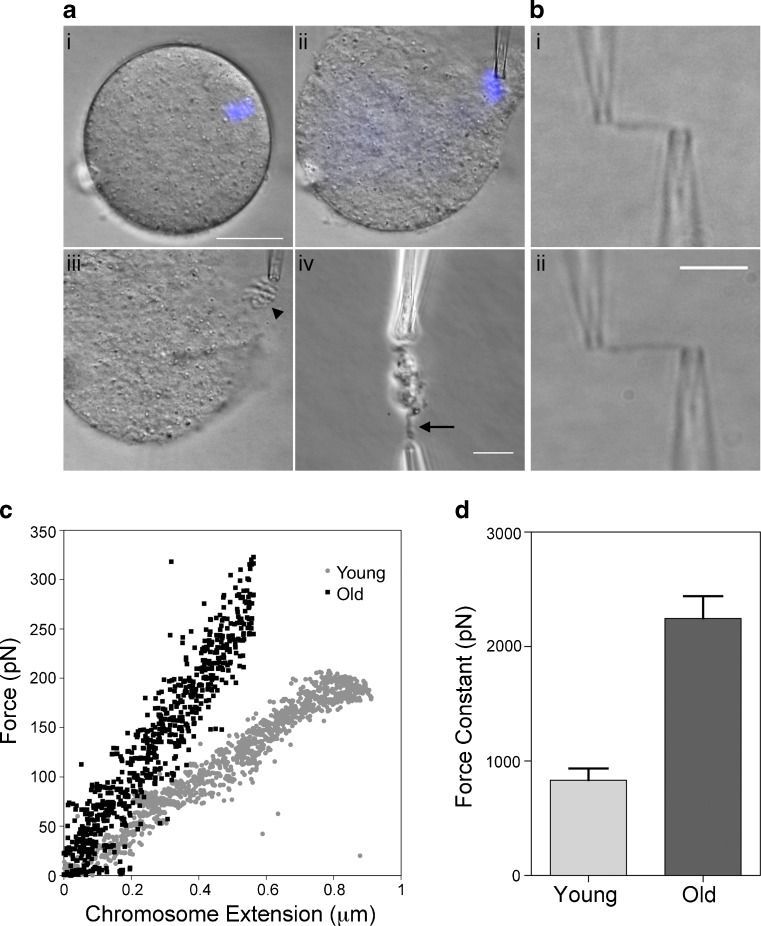Fig. 1.
Meiotic chromosomes can be isolated from eggs and exhibit significant age-associated differences in structure. a. Chromosomes were isolated from mouse eggs after removal of the zona pellucida. The spindle and chromosomes were identified by phase contrast microscopy, shown here stained with Hoescht 33342 (i–ii). Scale bar, 25 μm (ii). Chromosomes are removed from the egg as a cluster (iii, arrowhead). To isolate an individual chromosome, a free end was captured by a second glass pipette and pulled away from the cluster. Scale bar, 10 μm. (iv, arrow). b. A single chromosome can be removed from the cluster of chromosomes, held between two glass pipettes and stretched (i, unstretched; ii, stretched) Scale bar, 5 μm. c. After calibration of the floppy pipette, a force-extension curve can be generated from the relative positions of the pipette tips as recorded by the Labview software. The slope of the line is indicative of the spring constant of the chromosome; the spring constant for chromosomes from eggs from old animals is significantly different from those of young animals. Representative curves shown. d. The force constant of chromosomes from eggs of old animals is significantly higher than those from young animals. The mean force constant is 830 ± 100 pN for young and vs 2250 ± 190 pN for old animals. N = 8 chromosomes for each group. Each individual animal contributed a single chromosome for a total of 8 animals per experimental group. Error bars; SEM. P < 0.0001

